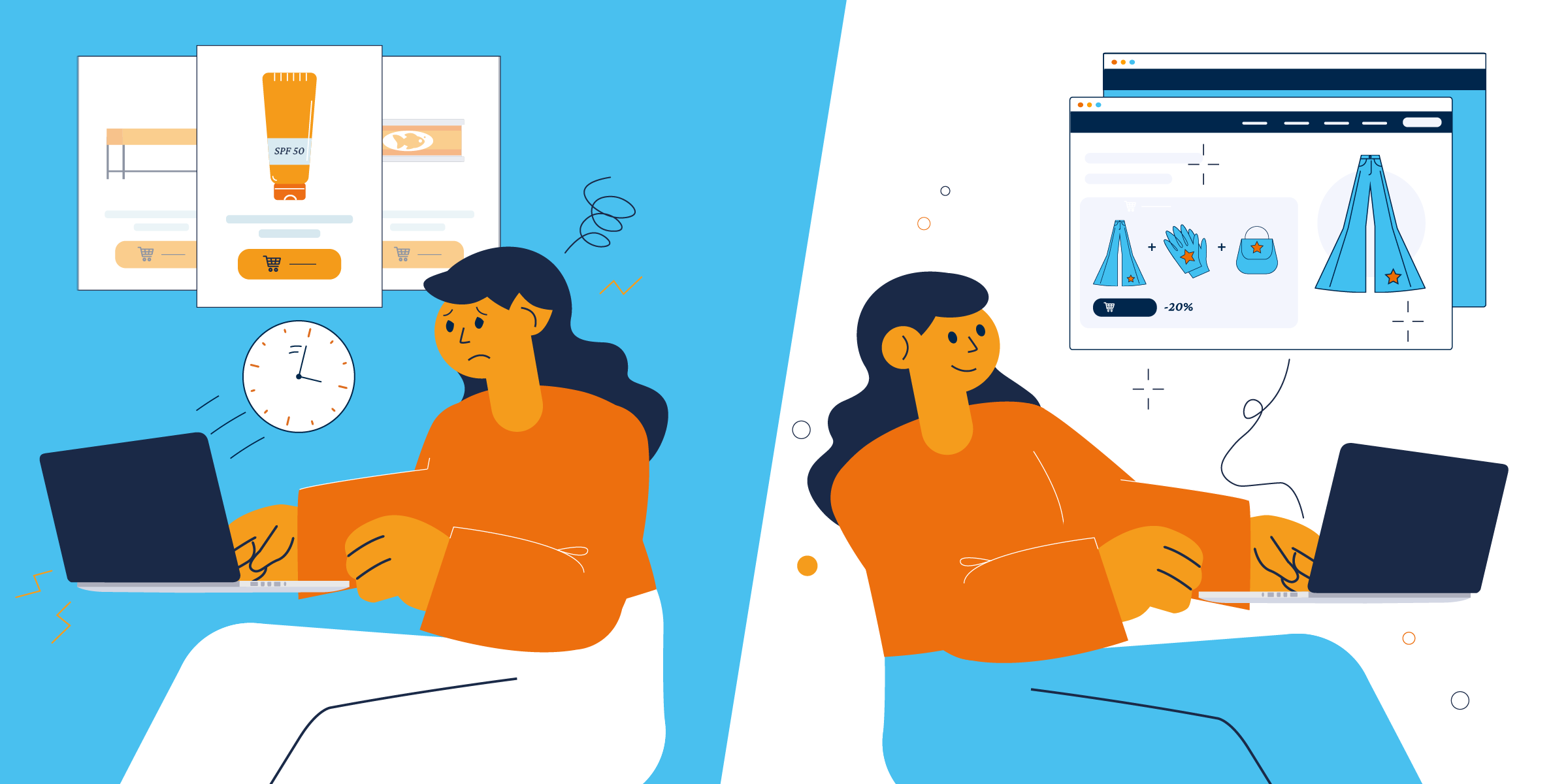In today’s digital world, one-size-fits-all isn’t just outdated – it’s a missed opportunity.
Whether you’re launching a new product, running a campaign, or just trying to keep bounce rates down, how you speak to your audience matters. And if your messages, banners, and recommendations look the same for everyone, you’re likely losing attention – and conversions – fast.
Let’s take a closer look at why personalization is no longer optional, what it changes, and how brands can start closing the gap between relevance and revenue.
The Problem With Non-Personalized Experiences
When every visitor sees the same homepage, the same product sliders, and the same call to actions, you’re not speaking to individual needs – you’re hoping something sticks.
Here’s what that approach is costing you:
- High bounce rates: Users leave when nothing feels relevant to them
- Lower conversion rates: If customers don’t feel understood, they won’t engage
- Wasted ad spend: You pay for clicks but lose visitors before they convert
- Brand disconnect: Generic experiences create no emotional connection
In short: You might get the traffic, but you’re not making the most of it.
What Personalization Changes
Personalization turns assumptions into real-time relevance. With the right setup, your website responds to each user based on:
- Location
- Behavior
- Traffic source
- Purchase history
- Device type
- Customer segment
It’s not just about “Hi, First Name.” It’s about knowing what content to show, what product to recommend, and what next step to guide a user toward – all without friction.
Real Results: What Happens When You Personalize
Brands that switch from static to dynamic, personalized experiences often see results like:
- Higher conversion rates
Example: Green Petfood improved product recommendations with trbo – resulting in a 17% increase in conversion rate. Showing the right product to the right person makes a measurable difference. - Lower support effort
Example: BitterLiebe reduced support tickets by 30% and increased issue resolution by 83% with a personalized chatbot – improving the customer experience even outside support hours. - Increased Purchase Value
Example: oui personalized shopping cart reminders using trbo and saw 25% more conversions and 20% higher order values. A well-timed nudge can turn a maybe into a meaningful purchase.
Personalization vs. Non-Personalization: A Quick Comparison

How trbo Supports the Shift
Many brands are still early in their personalization journey. The good news? It’s never been easier to start – and users now expect it. With trbo, you don’t have to overhaul everything at once. Our personalization platform allows you to:
- Scale fast: Build dynamic segments that react to user behavior in real time
- Start simple: Change banners or product recommendation based on traffic source or device
- Test and optimize: Use A/B or MAB testing to see what works best
- Go deeper: Add guided selling (trbo Advise), chat personalization (trbo Chat), and inspiration tools (trbo Bundle)
Every small change brings you closer to a more effective and engaging user journey.
Personalization > Non-Personalization
- Non-personalized experiences = lost relevance = lost revenue
- Personalization increases engagement, conversions, and satisfaction
- You don’t need to be perfect – you just need to start
- With tools like trbo, it’s easy to roll out personalization step by step
The message is clear: If you’re still treating every user the same, you’re missing out. Personalization isn’t a trend. It’s the new standard – and it’s already delivering measurable impact.
